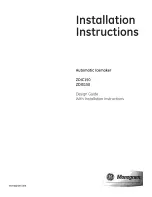
Network Terms and Information
192
20
Authentication methods
20
LEAP (For wireless network)
Cisco LEAP (Light Extensible Authentication Protocol) has been developed by Cisco Systems, Inc. and
uses a user ID and password for authentication.
EAP-FAST
EAP-FAST (Extensible Authentication Protocol-Flexible Authentication via Secured Tunnel) has been
developed by Cisco Systems, Inc. and uses a user ID and password for authentication, and symmetric key
algorithms to achieve a tunnelled authentication process.
The printer supports the following inner authentication methods:
• EAP-FAST/NONE
• EAP-FAST/MS-CHAPv2
• EAP-FAST/GTC
PEAP
PEAP (Protected Extensible Authentication Protocol) has been developed by Microsoft Corporation, Cisco
Systems and RSA Security. PEAP creates an encrypted SSL (Secure Sockets Layer)/TLS (Transport
Layer Security) tunnel between a client and an authentication server, for sending a user ID and password.
PEAP provides mutual authentication between the server and the client.
The printer supports the following inner authentication methods:
• PEAP/MS-CHAPv2
• PEAP/GTC
EAP-TTLS
EAP-TTLS (Extensible Authentication Protocol Tunnelled Transport Layer Security) has been developed
by Funk Software and Certicom. EAP-TTLS creates a similar encrypt SSL tunnel to PEAP, between a
client and an authentication server, for sending a user ID and password. EAP-TTLS provides mutual
authentication between the server and the client.
The printer supports the following inner authentication methods:
• EAP-TTLS/CHAP
• EAP-TTLS/MS-CHAP
• EAP-TTLS/MS-CHAPv2
• EAP-TTLS/PAP
EAP-TLS
EAP-TLS (Extensible Authentication Protocol Transport Layer Security) requires digital certificate
authentication both at a client and an authentication server.
Summary of Contents for QL-810W
Page 213: ......











































